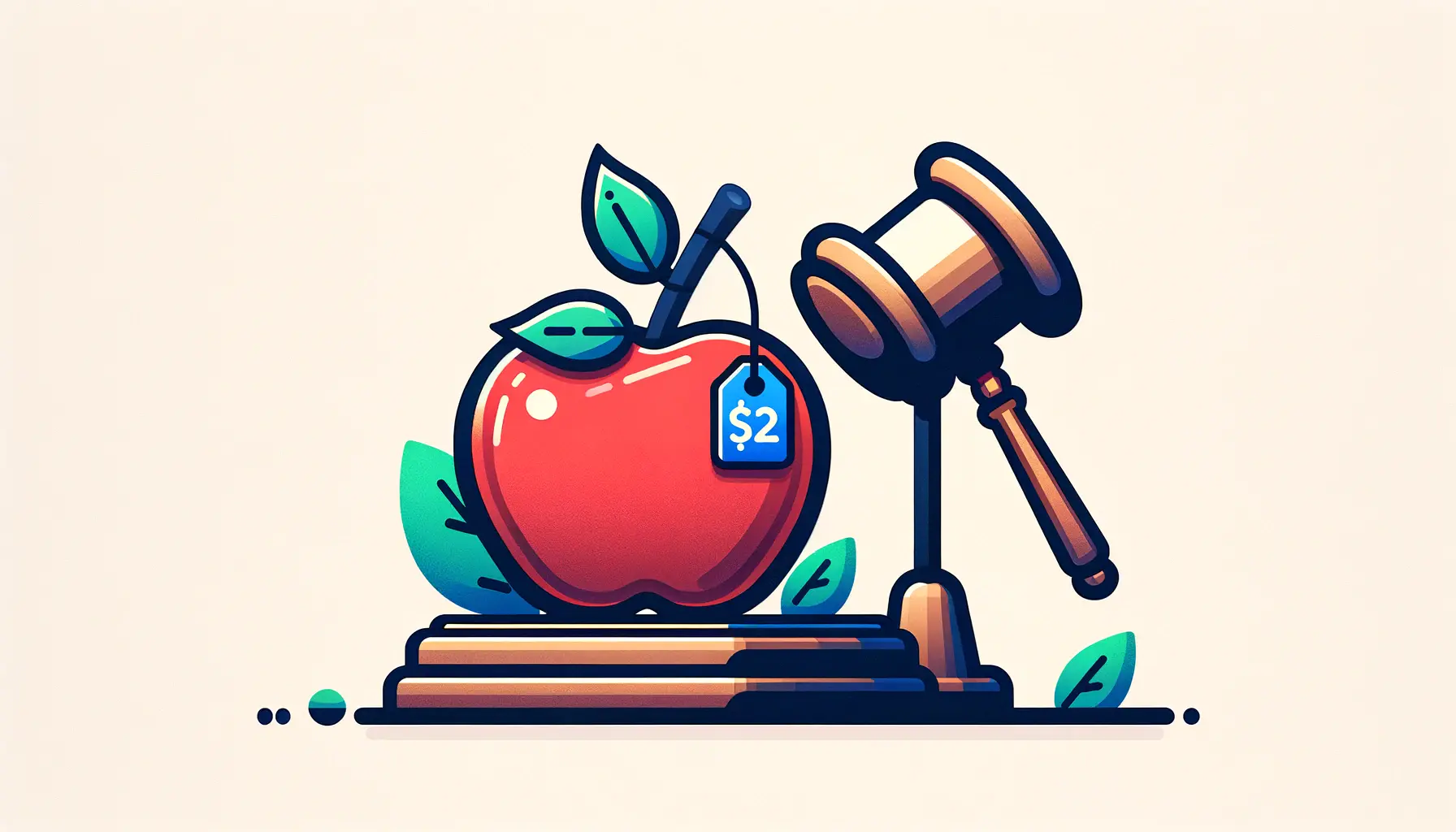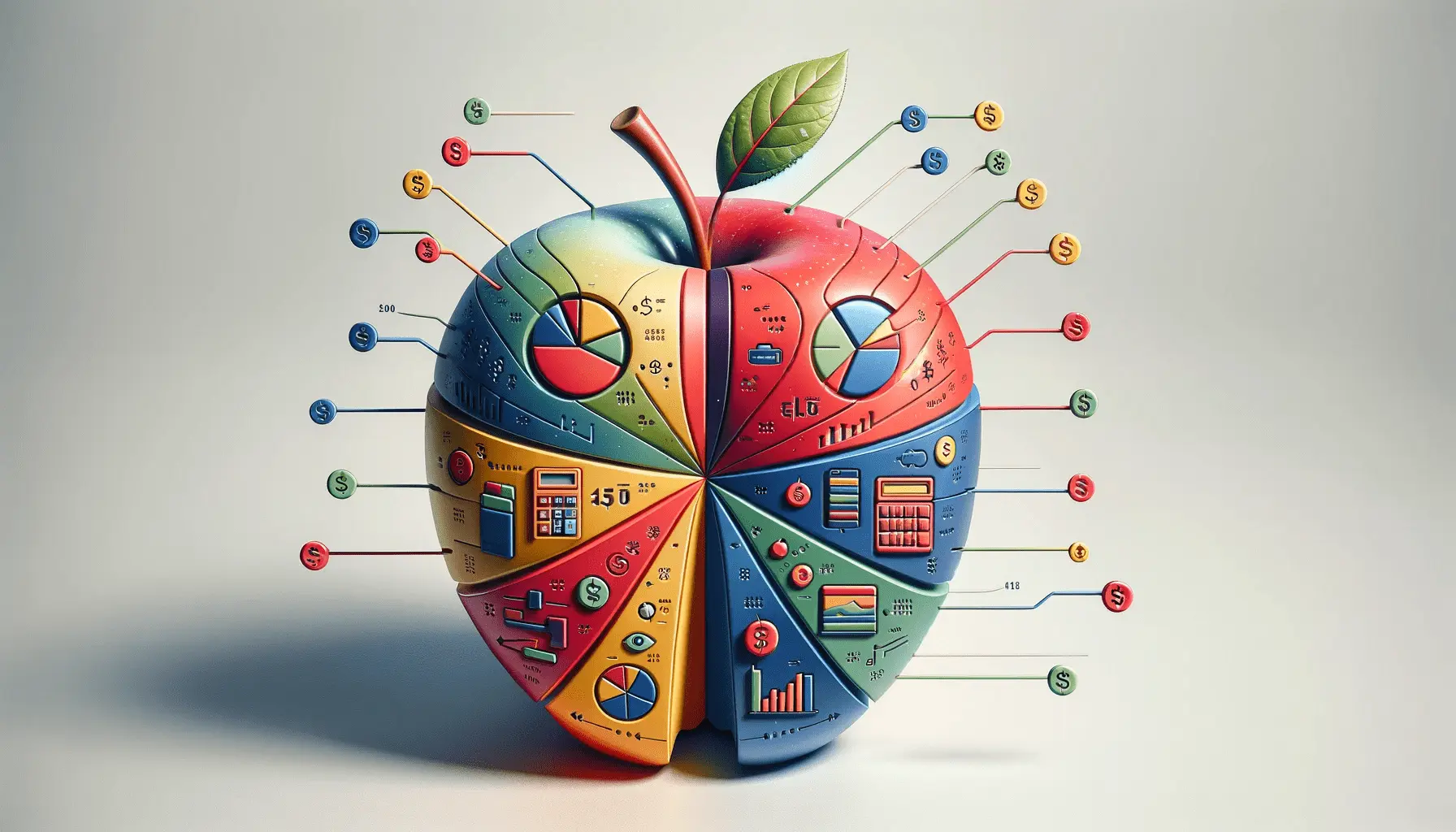The advent of ChatGPT 4 has ushered in a new era of artificial intelligence, offering unprecedented capabilities in natural language processing and understanding.
This iteration of ChatGPT stands as a testament to the rapid advancements in AI technology, promising to revolutionize various sectors by enhancing efficiency, accuracy, and user experience.
As businesses and individuals alike explore the potential of ChatGPT 4, a thorough cost-benefit analysis becomes essential to understand its value proposition and its impact on the future of digital communication and automation.
ChatGPT 4, developed by OpenAI, is not just another step in the evolution of AI models; it represents a significant leap forward.
With its advanced algorithms and vast knowledge base, ChatGPT 4 offers enhanced conversational capabilities, making interactions more fluid, natural, and contextually relevant.
This improvement opens up new avenues for application, from customer service automation to content creation, programming assistance, and beyond.
However, with great power comes great responsibility—and in this case, a cost.
This analysis aims to dissect the costs associated with implementing ChatGPT 4 and weigh them against the tangible and intangible benefits it brings to the table.
- Understanding ChatGPT 4’s Capabilities
- Cost Analysis of Implementing ChatGPT 4
- Applications and Use Cases of ChatGPT 4
- Challenges and Limitations of ChatGPT 4
- Future Directions of ChatGPT 4 and AI
- Integrating ChatGPT 4 into Business Strategies
- Enhancing User Experience with ChatGPT 4
- Embracing the Future with ChatGPT 4
- ChatGPT 4 FAQ
Understanding ChatGPT 4’s Capabilities
Enhanced Natural Language Processing
At the heart of ChatGPT 4’s appeal is its enhanced natural language processing (NLP) capabilities.
This model can understand and generate human-like text with an unprecedented level of sophistication.
By leveraging a more extensive training dataset and incorporating feedback loops from real-world interactions, ChatGPT 4 can grasp the nuances of human language, including idioms, colloquialisms, and complex sentence structures.
This advancement not only improves the quality of interactions but also expands the model’s utility across different languages and cultural contexts.
The implications of these enhanced NLP capabilities are vast.
For businesses, it means being able to offer customer support that is not only automated but also empathetic and contextually aware.
For content creators, it opens up possibilities for generating high-quality written content at scale.
And for developers, it offers a powerful tool for debugging, code generation, and even educating novice programmers.
Advanced Contextual Understanding
Another significant improvement in ChatGPT 4 is its advanced contextual understanding.
Unlike its predecessors, ChatGPT 4 can maintain the context of a conversation over longer interactions, allowing for more coherent and meaningful exchanges.
This feature is particularly beneficial in scenarios where continuity and depth of discussion are crucial, such as in therapy apps, tutoring services, or complex customer service inquiries.
This advanced contextual understanding also enhances ChatGPT 4’s ability to learn from its interactions.
Over time, the model can adapt to the preferences and patterns of its users, offering personalized responses and recommendations.
This level of personalization was previously challenging to achieve at scale, marking a significant milestone in the journey towards truly intelligent AI assistants.
ChatGPT 4’s enhanced NLP and advanced contextual understanding set the stage for a new era of AI applications, promising to transform how we interact with technology on a daily basis.
Cost Analysis of Implementing ChatGPT 4
The implementation of ChatGPT 4, while promising a host of benefits, comes with its own set of costs.
These costs can be broadly categorized into direct and indirect expenses.
Direct costs are those associated with the acquisition and operation of the technology, including subscription fees, integration, and maintenance.
Indirect costs, on the other hand, may include training employees to use the system effectively and potential downtime during the integration phase.
Understanding these costs is crucial for businesses and individuals considering ChatGPT 4 as a solution.
Here’s a breakdown of the key cost components:
- Subscription Fees: Access to ChatGPT 4 may require a subscription fee, especially for commercial use or access to advanced features. This fee can vary based on usage volume, with higher costs for more extensive use.
- Integration Costs: Integrating ChatGPT 4 into existing systems or workflows may require significant upfront investment, especially for complex applications or those requiring custom development.
- Maintenance and Updates: Regular maintenance and updates are necessary to keep the system running smoothly and securely, which may incur ongoing costs.
- Training: Ensuring that staff can effectively use and manage ChatGPT 4 may require training programs, which can add to the overall cost of implementation.
Calculating Return on Investment
While the costs associated with ChatGPT 4 can be significant, it’s essential to consider them in the context of the potential return on investment (ROI).
The ROI of implementing ChatGPT 4 can be measured in terms of increased efficiency, cost savings from automating tasks, improved customer satisfaction, and the potential for new revenue streams through innovative applications of the technology.
To accurately calculate ROI, businesses should consider:
- Cost Savings: Quantify the savings from reduced labor costs, faster response times, and decreased error rates.
- Revenue Growth: Estimate the potential for increased sales or new revenue opportunities enabled by ChatGPT 4.
- Efficiency Gains: Assess the impact on operational efficiency, including faster turnaround times and the ability to scale services without proportional increases in costs.
A comprehensive cost-benefit analysis, taking into account both the direct and indirect costs as well as the potential ROI, is essential for making an informed decision about implementing ChatGPT 4.
Applications and Use Cases of ChatGPT 4
ChatGPT 4’s advanced capabilities have opened up a plethora of applications across various industries, demonstrating its versatility and power.
From enhancing customer service to streamlining content creation and offering personalized learning experiences, ChatGPT 4 is set to revolutionize how businesses and individuals interact with AI technology.
Below are some of the key applications and use cases where ChatGPT 4 is making a significant impact.
Each application not only showcases the model’s advanced features but also highlights the potential for innovation and efficiency improvements in each domain.
- Customer Service Automation: ChatGPT 4 can handle a wide range of customer inquiries, providing quick, accurate, and personalized responses. This reduces wait times and improves customer satisfaction while allowing human agents to focus on more complex issues.
- Content Creation: From writing articles and generating creative content to composing emails and creating marketing copy, ChatGPT 4 offers a powerful tool for content creators, significantly reducing the time and effort required to produce high-quality content.
- Educational Tools: ChatGPT 4 can be used to create personalized learning experiences, tutor students in various subjects, and even generate educational content tailored to individual learning styles and needs.
- Programming Assistance: Developers can leverage ChatGPT 4 for coding assistance, debugging, and even learning new programming languages or frameworks, enhancing productivity and efficiency.
Transforming Customer Interactions
One of the most significant impacts of ChatGPT 4 is in the realm of customer service.
By automating routine inquiries, businesses can ensure that customers receive instant support at any time of the day.
This not only enhances the customer experience but also optimizes the allocation of human resources, allowing businesses to provide a higher level of service without increasing costs.
Revolutionizing Content Production
In the content creation sphere, ChatGPT 4 is a game-changer.
It can generate a wide variety of content types, from technical articles to creative stories, with a level of coherence and creativity that was previously unattainable.
This capability opens up new possibilities for content marketing, allowing businesses to produce a steady stream of quality content without the need for a large team of writers.
The diverse applications of ChatGPT 4 underscore its potential to transform industries by automating tasks, enhancing productivity, and creating new opportunities for innovation and growth.
Challenges and Limitations of ChatGPT 4
Despite its advanced capabilities and wide range of applications, ChatGPT 4 is not without its challenges and limitations.
As with any technology, understanding these limitations is crucial for effectively leveraging ChatGPT 4’s strengths while mitigating potential drawbacks.
Here, we explore some of the key challenges associated with ChatGPT 4 and the limitations that users and developers may encounter.
- Contextual Limitations: While ChatGPT 4 has significantly improved contextual understanding, there are still limits to its ability to maintain context over very long conversations or highly complex topics. This can lead to less relevant or coherent responses in some situations.
- Data Privacy Concerns: The use of large language models like ChatGPT 4 raises concerns about data privacy, especially when handling sensitive information. Ensuring that user data is protected and not misused is a significant challenge for developers and businesses.
- Dependency on Training Data: ChatGPT 4’s performance is heavily dependent on the quality and diversity of its training data. Biases or inaccuracies in the training dataset can lead to biased or incorrect responses, highlighting the need for careful data curation and ongoing model training.
- Computational Costs: Running and maintaining state-of-the-art models like ChatGPT 4 requires significant computational resources, which can be a barrier for smaller organizations or individual developers.
Addressing Ethical Considerations
As ChatGPT 4 becomes more integrated into daily tasks and business operations, ethical considerations become increasingly important.
Issues such as the potential for generating misleading information, perpetuating biases present in training data, and replacing human jobs necessitate careful consideration and proactive measures.
Developing ethical guidelines and ensuring transparency in AI applications are crucial steps in addressing these concerns.
Overcoming Technical Hurdles
The technical challenges of implementing and optimizing ChatGPT 4, from integration difficulties to managing computational costs, require innovative solutions.
Leveraging cloud computing resources, optimizing model efficiency, and exploring lightweight model alternatives are strategies that can help overcome these hurdles, making ChatGPT 4 more accessible and effective for a wider range of users and applications.
While ChatGPT 4 represents a significant advancement in AI, addressing its challenges and limitations is essential for maximizing its potential and ensuring its responsible and effective use.
Future Directions of ChatGPT 4 and AI
The development and deployment of ChatGPT 4 mark a significant milestone in the field of artificial intelligence.
However, the journey of AI innovation is far from over.
The future directions of ChatGPT 4 and AI, in general, are poised to continue transforming industries, reshaping human-computer interaction, and pushing the boundaries of what machines can achieve.
This section explores the potential future advancements and the evolving landscape of AI technology.
As we look ahead, several key areas are likely to define the trajectory of ChatGPT 4 and similar AI models:
- Enhanced Model Efficiency: Future iterations of ChatGPT and other AI models will likely focus on improving computational efficiency, enabling faster response times and lower resource consumption. This will make AI more accessible to a broader range of users and applications.
- Greater Contextual Awareness: Advancements in natural language understanding and processing will enable AI models to handle even more complex conversations and topics with greater accuracy and relevance.
- Expanded Applications: As AI models become more sophisticated, their applications will expand into new domains, including more nuanced areas of human activity such as art, psychology, and complex decision-making.
- Addressing Ethical and Societal Impacts: The future of AI will also involve a greater focus on addressing the ethical, privacy, and societal implications of widespread AI adoption, ensuring that AI benefits humanity while minimizing potential harms.
Integrating AI with Emerging Technologies
The integration of AI with other emerging technologies such as blockchain, augmented reality (AR), and the Internet of Things (IoT) presents exciting possibilities.
For instance, combining ChatGPT 4 with IoT devices could lead to smarter homes and cities that respond more intuitively to human needs.
Similarly, integrating AI with AR could revolutionize education and training, providing immersive learning experiences that adapt to the learner’s pace and style.
Personalization and AI Ethics
As AI technologies like ChatGPT 4 become more integrated into daily life, personalization will become increasingly important.
AI models will need to adapt to individual preferences, cultural contexts, and ethical considerations, ensuring that interactions are not only efficient but also respectful and inclusive.
This will require ongoing research, dialogue, and collaboration between technologists, ethicists, and the broader community.
The future of ChatGPT 4 and AI is not just about technological advancements but also about how these technologies are applied responsibly and ethically to enhance human life.
Integrating ChatGPT 4 into Business Strategies
The integration of ChatGPT 4 into business strategies represents a forward-thinking approach to leveraging AI for competitive advantage.
As businesses across various sectors seek to innovate and improve efficiency, ChatGPT 4 offers a versatile tool that can enhance operations, customer service, and content creation, among other areas.
This part of the article delves into how businesses can strategically incorporate ChatGPT 4 into their operations to drive growth and innovation.
To effectively integrate ChatGPT 4, businesses should consider the following strategies:
- Identifying High-Impact Use Cases: Businesses should start by identifying areas where ChatGPT 4 can have the most significant impact, such as automating customer support, generating content, or enhancing product recommendations.
- Customizing Solutions: Leveraging ChatGPT 4’s capabilities to develop customized solutions that meet specific business needs can lead to more effective outcomes. This might involve training the model on company-specific data or integrating it with existing software and systems.
- Ensuring Seamless Integration: Successful integration of ChatGPT 4 requires careful planning to ensure compatibility with existing workflows and systems. This may involve technical adjustments and the development of interfaces that allow for smooth interaction between AI and human users.
- Training and Support: Providing training for employees on how to use ChatGPT 4 effectively is crucial. Additionally, ongoing support and updates will ensure that the AI continues to meet the evolving needs of the business.
Maximizing Customer Engagement
ChatGPT 4 can transform how businesses interact with their customers by providing personalized, efficient, and engaging communication.
By integrating ChatGPT 4 into customer service platforms, businesses can offer 24/7 support, instant responses to inquiries, and tailored recommendations, significantly enhancing the customer experience.
Driving Content Strategy
Content is king in the digital age, and ChatGPT 4 can play a pivotal role in content strategy.
From generating ideas and drafting content to optimizing for SEO, ChatGPT 4 can help businesses produce a consistent stream of high-quality content, engaging their audience and boosting their online presence.
Incorporating ChatGPT 4 into business strategies not only enhances operational efficiency and customer engagement but also fosters innovation, setting the stage for sustained growth and competitiveness in the digital era.
Enhancing User Experience with ChatGPT 4
The advent of ChatGPT 4 has significantly broadened the horizons for creating more engaging, personalized, and efficient user experiences.
In an era where user expectations are continually evolving, leveraging ChatGPT 4 can help businesses and developers meet and exceed these demands.
This section explores the various ways in which ChatGPT 4 can be utilized to enhance user experience across different platforms and applications.
Key strategies for enhancing user experience with ChatGPT 4 include:
- Personalization at Scale: ChatGPT 4’s ability to understand and generate human-like text enables the delivery of highly personalized content and responses. This can be applied in marketing communications, product recommendations, and interactive applications, offering users a tailored experience that resonates with their preferences and behaviors.
- Interactive and Engaging Interfaces: Integrating ChatGPT 4 into chatbots and virtual assistants transforms them into more intelligent, responsive, and engaging interfaces. Users can enjoy conversational interactions that feel natural and helpful, improving engagement and satisfaction.
- Accessibility and Inclusivity: ChatGPT 4 can be used to develop tools and features that enhance accessibility, such as generating alternative text for images or providing real-time language translation. This ensures that applications and services are inclusive and accessible to a broader audience.
- Continuous Learning and Improvement: By analyzing interactions and feedback, ChatGPT 4 can continuously learn and adapt to better meet user needs. This iterative improvement process ensures that user experiences remain relevant and engaging over time.
Creating Conversational Interfaces
Conversational interfaces powered by ChatGPT 4 offer a more natural and intuitive way for users to interact with technology.
Whether it’s through voice-activated assistants or text-based chatbots, ChatGPT 4 can understand and respond to user queries with high accuracy, making technology more accessible and enjoyable to use.
Supporting Multilingual Experiences
ChatGPT 4’s multilingual capabilities open up opportunities for creating experiences that cater to a global audience.
By supporting interactions in multiple languages, businesses can reach out to and engage with users from different cultural and linguistic backgrounds, breaking down barriers and fostering a more inclusive digital environment.
Leveraging ChatGPT 4 to enhance user experience is about more than just leveraging advanced technology; it’s about creating meaningful, engaging, and inclusive interactions that resonate with users on a personal level.
Embracing the Future with ChatGPT 4
The exploration of ChatGPT 4’s capabilities, costs, applications, and future directions paints a comprehensive picture of its transformative potential.
As we stand on the brink of a new era in artificial intelligence, ChatGPT 4 emerges as a pivotal force in reshaping industries, enhancing user experiences, and redefining the boundaries of human-computer interaction.
The journey through the various facets of ChatGPT 4 reveals not only the technological marvel it represents but also the strategic considerations businesses must navigate to harness its full potential.
Strategic Integration and Ethical Considerations
Incorporating ChatGPT 4 into business strategies and operations requires a nuanced approach, balancing innovation with ethical considerations.
The cost-benefit analysis of ChatGPT 4 underscores the importance of a strategic framework that aligns with organizational goals and user needs.
Moreover, as we delve into the applications and use cases of ChatGPT 4, it becomes evident that its value extends beyond mere efficiency gains to include driving customer satisfaction and fostering creative endeavors.
Overcoming Challenges and Looking Ahead
Despite the promising horizon, the challenges and limitations of ChatGPT 4 remind us of the importance of continuous improvement and ethical stewardship in the development and deployment of AI technologies.
Addressing these challenges head-on is crucial for ensuring that ChatGPT 4 and future AI innovations benefit society as a whole.
Looking ahead, the future directions of ChatGPT 4 and AI technology suggest a landscape ripe with opportunities for breakthroughs in efficiency, personalization, and ethical AI use.
- The integration of ChatGPT 4 into diverse sectors underscores its versatility and the broad spectrum of opportunities it presents for innovation and growth.
- Enhancing user experiences with ChatGPT 4 highlights the model’s role in creating more engaging, personalized, and efficient interactions across digital platforms.
- Future advancements in AI, including ChatGPT 4, promise to further elevate our capabilities, driving forward the realms of creativity, decision-making, and human-computer synergy.
In conclusion, ChatGPT 4 stands as a testament to the remarkable progress in artificial intelligence, offering a glimpse into a future where AI and human ingenuity converge to create unprecedented possibilities.
As we navigate this evolving landscape, the insights gleaned from the cost-benefit analysis, applications, and strategic considerations surrounding ChatGPT 4 provide a roadmap for leveraging AI to its fullest potential.
Embracing ChatGPT 4 and its ensuing iterations with a mindful approach towards innovation, ethics, and user-centricity will be key to unlocking the transformative power of AI in the years to come.
ChatGPT 4 FAQ
Explore the most frequently asked questions about ChatGPT 4 to gain deeper insights into its capabilities, applications, and how it stands out in the realm of AI technology.
ChatGPT 4 is an advanced AI developed by OpenAI, optimized for dialogue with enhanced natural language understanding and generation capabilities.
Access to ChatGPT 4 is available through OpenAI’s platform, with options for both free and subscription-based models, including ChatGPT Plus.
ChatGPT 4 introduces enhanced contextual understanding, more accurate responses, and the ability to process complex instructions more effectively.
Yes, ChatGPT 4 can assist with coding by generating code snippets, debugging, and providing programming guidance across various languages.
Yes, ChatGPT 4 surpasses its predecessors with significant improvements in language processing, making conversations more coherent and contextually relevant.
ChatGPT 4 is designed with privacy in mind, ensuring user data is handled securely and in compliance with data protection regulations.
Yes, ChatGPT 4 can be integrated into various platforms and systems, offering versatile applications in customer service, content creation, and more.
Industries ranging from tech and education to healthcare and customer service can leverage ChatGPT 4 to enhance efficiency and user experience.












